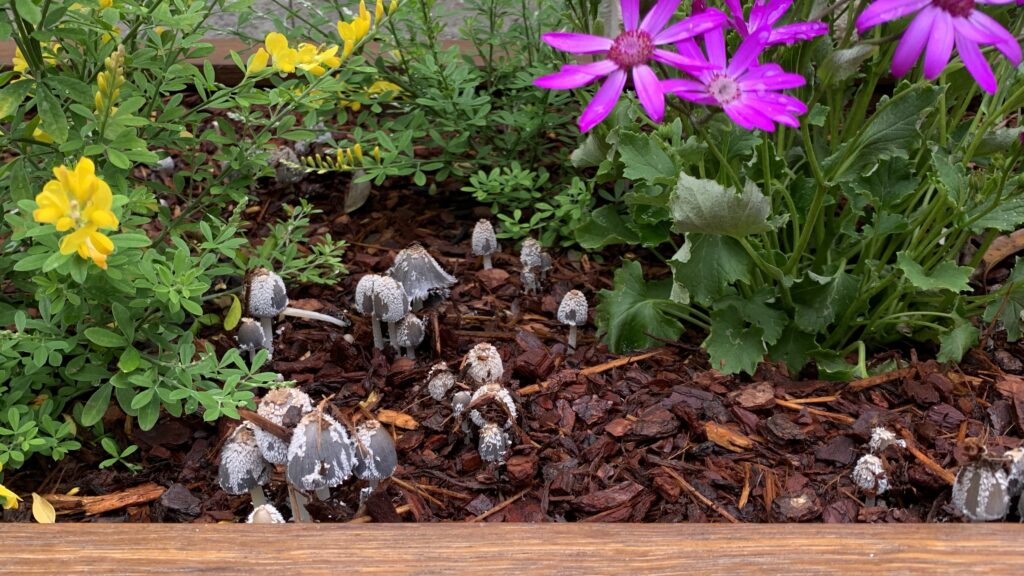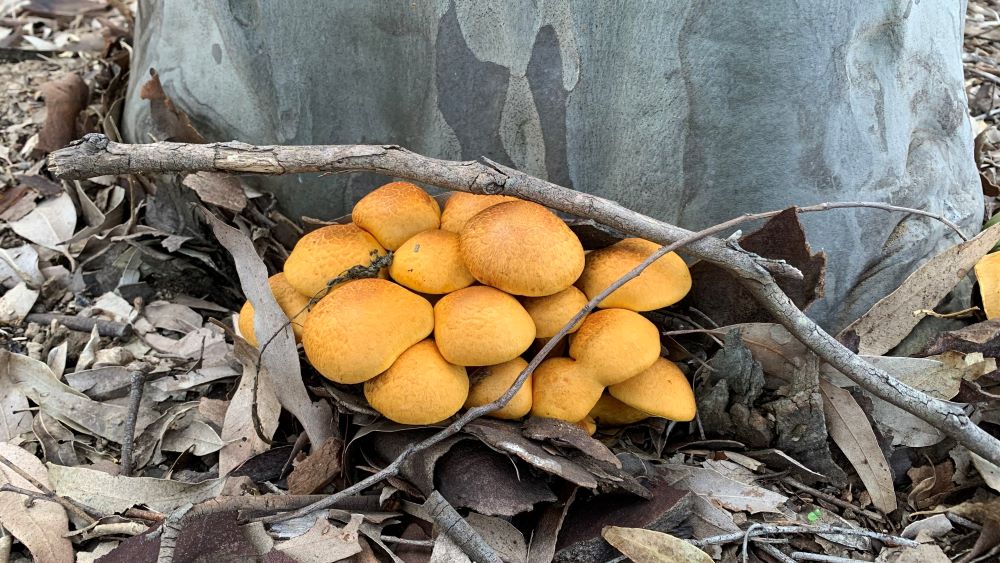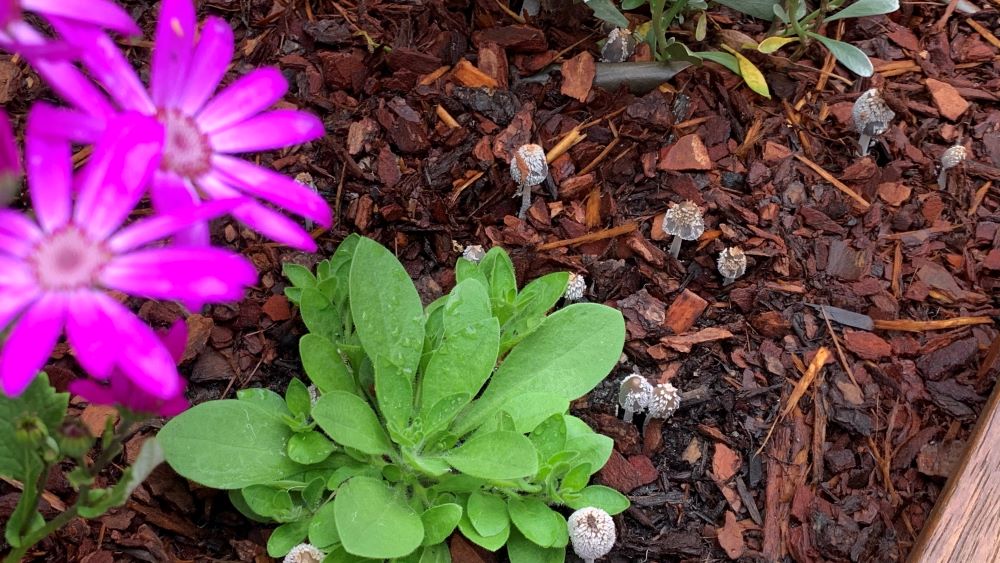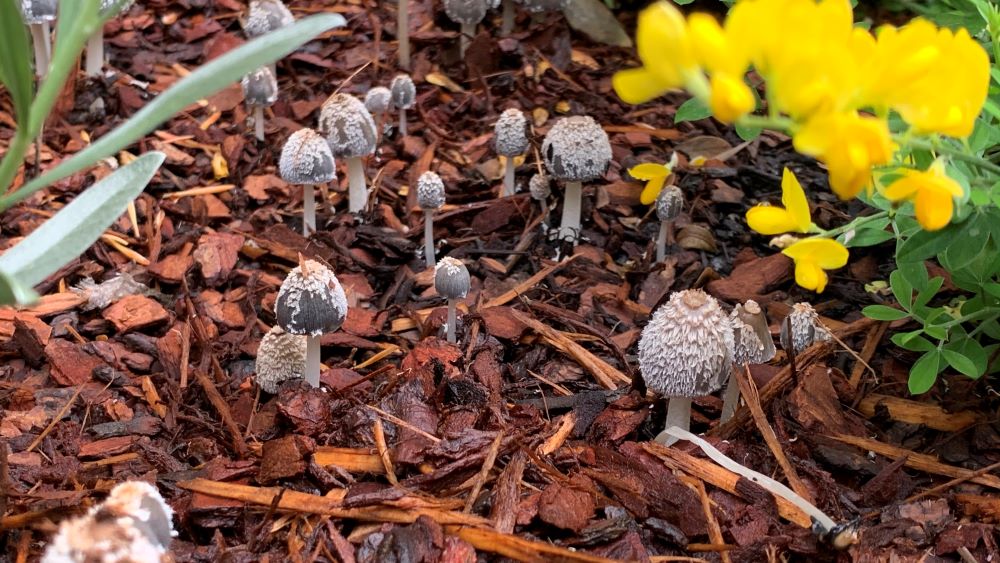There are many ways to get rid of mushrooms in your vegetable garden, and the solution depends on the severity of the issue. Some natural remedies include adjusting garden conditions, such as reducing watering and increasing sunlight, while chemical solutions involve using fungicides to kill off the mushrooms. Physical removal is also an effective method, but it’s important to take precautions to avoid spreading spores.
By following the tips in this article, you’ll be able to keep your vegetable garden healthy and mushroom-free.

Mushrooms thrive in damp and humid environments with decaying organic matter, which can often be found in vegetable gardens. While some mushrooms can be beneficial to your garden, others can be toxic and even deadly. Therefore, it’s important to take preventative measures to discourage mushroom growth and to remove them when necessary.
Key Takeaways
- Understanding why mushrooms grow in gardens can help prevent their development.
- Natural remedies such as adjusting garden conditions can discourage mushroom growth.
- Chemical solutions and physical removal are effective methods for eliminating mushrooms in your vegetable garden.
Understanding Mushroom Growth in Gardens
Mushrooms are a type of fungi that can grow in any environment that is rich in nutrients and decaying organic matter. They are often found in gardens because they feed on the decaying roots, stumps, or mulch. While they can be unsightly, mushrooms are not inherently problematic and can actually be helpful to a garden in most cases.
Mushrooms are the reproductive or fruiting structures of fungi. They release spores into the air, which can then settle in your garden and grow into new mushrooms. The appearance of mushrooms in your garden is usually indicative of decaying tree stumps or roots in the soil.

It is important to understand that mushrooms are not harmful to your garden. In fact, they can be beneficial to your plants. As the fungus feeds on the decaying organic matter, it breaks this matter down, making nutrients available to your plants. Mushrooms can also help to increase soil moisture and improve soil structure.
However, if you have young children or pets, it is important to be cautious. Some mushrooms can be toxic, and it is best to remove them from your garden to avoid any accidental ingestion. Additionally, if you find that mushrooms are growing in areas where you plan to plant new crops, it may be best to remove them to avoid any competition for nutrients.
Overall, understanding the role of mushrooms in your garden can help you make informed decisions about whether or not to remove them. If you do decide to remove them, there are several steps you can take to do so safely and effectively.
Preventative Measures for Mushroom Development
If you’re looking to prevent the development of mushrooms in your vegetable garden, there are several steps you can take to make your garden less hospitable to fungi. Here are a few preventative measures you can take:
Improving Soil Drainage
Mushrooms thrive in moist environments, so improving soil drainage is essential in preventing their growth. You can achieve this by ensuring your garden beds are not waterlogged and by adding organic matter to improve soil structure. You can also consider using raised beds to improve drainage.

Adjusting Watering Techniques
Overwatering can lead to the development of mushrooms in your garden. To prevent this, make sure you’re watering your plants correctly. Water your plants deeply and infrequently, rather than giving them a light watering every day. This will encourage deep root growth and reduce the amount of moisture on the soil surface.
Using Proper Mulch
Using the right type of mulch can also help prevent the development of mushrooms in your garden. Avoid using organic mulches like straw or leaves, as they can provide a food source for fungi. Instead, consider using a non-organic mulch like gravel or rocks.

Maintaining Garden Cleanliness
Keeping your garden clean and free of debris can also help prevent the growth of mushrooms. Remove any dead plant material, fallen leaves, or other debris from your garden beds regularly. This will reduce the amount of decaying organic matter in your garden, which fungi need to grow.
By taking these preventative measures, you can reduce the likelihood of mushrooms developing in your vegetable garden.
Natural Remedies to Discourage Mushrooms
If you’re looking for natural ways to discourage mushrooms from growing in your vegetable garden, you’re in luck. There are a few simple solutions you can try that don’t involve harmful chemicals.
Vinegar Solution
One effective natural remedy for discouraging mushrooms is a vinegar solution. Mix equal parts of white vinegar and water in a spray bottle and spray the solution directly on the mushrooms. The vinegar will help to dry out the mushrooms and make the environment less hospitable for them to grow.
Baking Soda Mixture
Another natural remedy to try is a baking soda mixture. Mix 1 tablespoon of baking soda with 1 gallon of water and spray the solution directly on the mushrooms. The baking soda will help to raise the pH level of the soil, making it less favorable for mushrooms to grow.
Cinnamon Spray
Cinnamon is also a natural fungicide that can help to discourage mushrooms from growing. Mix 1 tablespoon of cinnamon powder with 1 gallon of water and spray the solution directly on the mushrooms. The cinnamon will help to kill the mushrooms and prevent new ones from growing.
In addition to these natural remedies, it’s important to keep your garden clean and well-maintained. Remove any dead plant material or debris from the garden, as this can provide a breeding ground for mushrooms. Make sure your garden is well-drained and not overly moist, as mushrooms thrive in damp environments.
By using these natural remedies and maintaining a clean and dry garden, you can discourage mushrooms from growing and protect your vegetable garden.
Chemical Solutions for Mushroom Control
If you have a severe infestation of mushrooms in your vegetable garden, chemical solutions may be necessary to get rid of them. However, keep in mind that these solutions can harm beneficial organisms in your garden, so use them sparingly and only as a last resort.
Fungicides
Fungicides are the most common chemical solution for controlling mushrooms. They work by preventing the growth and spread of fungi. However, not all fungicides are effective against all types of mushrooms, so it is important to choose the right one for your specific situation.
When using fungicides, always follow the instructions on the label carefully. Wear protective clothing, such as gloves and a mask, and avoid spraying on windy days. Also, be aware that some fungicides can harm plants, so use them with caution.
Herbicides
Herbicides are another type of chemical solution that can be used to control mushrooms. However, they are not as effective as fungicides and can harm plants and other beneficial organisms in your garden.
If you do decide to use herbicides, choose one that is specifically designed for mushrooms. Follow the instructions on the label carefully, wear protective clothing, and avoid spraying on windy days.
Overall, chemical solutions should be used as a last resort for controlling mushrooms in your vegetable garden. Instead, try natural methods such as removing decaying organic matter and improving drainage. If you do use chemicals, use them sparingly and follow the instructions carefully to avoid harming beneficial organisms in your garden.
Physical Removal of Mushrooms
If you’re dealing with a small number of mushrooms in your vegetable garden, physical removal is an effective method to get rid of them. There are two ways to physically remove mushrooms: hand-picking and tool-assisted removal.
Hand-Picking
Hand-picking is a simple and straightforward method to remove mushrooms from your vegetable garden. You can use gloves to protect your hands and simply pluck the mushrooms from the soil. Be sure to remove the entire mushroom, including the stem and any attached mycelium. Mycelium is the vegetative part of the fungus that grows beneath the soil.
It’s important to note that hand-picking is only effective for small infestations. If you have a large number of mushrooms in your garden, this method may not be practical.
Tool-Assisted Removal
If you have a large number of mushrooms in your vegetable garden, tool-assisted removal may be a more efficient method. You can use a garden hoe or rake to loosen the soil and remove the mushrooms. Be sure to remove the entire mushroom, including the stem and any attached mycelium.
It’s important to wear gloves when using tools to remove mushrooms, as some species can be toxic and cause skin irritation. Additionally, be sure to dispose of the mushrooms in a sealed bag and discard them in the trash. Do not compost them, as this can spread the spores and lead to further infestations.
In summary, physical removal of mushrooms is an effective method to get rid of them in your vegetable garden. Hand-picking is suitable for small infestations, while tool-assisted removal is more efficient for larger infestations. Be sure to wear gloves and dispose of the mushrooms properly to prevent further spread.
Monitoring and Adjusting Garden Conditions
Regular Inspections
To prevent the growth of mushrooms in your vegetable garden, it is important to regularly inspect your garden. Look for any signs of decaying organic matter, such as fallen leaves or rotting vegetables, as these provide a perfect breeding ground for mushrooms. Remove any debris as soon as possible to prevent the growth of mushrooms.
In addition to removing debris, inspect your plants regularly. If you notice any plants that are struggling or dying, remove them immediately. Sick or dying plants can attract fungi, including mushrooms, which can quickly spread to healthy plants.
Soil Testing
Soil testing is another important step in preventing the growth of mushrooms in your vegetable garden. Mushrooms thrive in soil that is rich in organic matter, so it is important to maintain a healthy balance of nutrients in your soil.
Test your soil regularly to ensure that it is not overly acidic or alkaline. If your soil is too acidic, add lime to raise the pH level. If your soil is too alkaline, add sulfur to lower the pH level. Maintaining a balanced pH level will help prevent the growth of mushrooms in your vegetable garden.
It is also important to ensure that your soil is well-draining. Mushrooms thrive in moist environments, so if your soil is too wet, it can provide a perfect breeding ground for mushrooms. If your soil is not well-draining, consider adding organic matter, such as compost or peat moss, to improve drainage.
By regularly monitoring and adjusting your garden conditions, you can prevent the growth of mushrooms in your vegetable garden and ensure that your plants remain healthy and strong.
Frequently Asked Questions
What natural methods can I use to eliminate mushrooms from my garden?
There are several natural methods you can use to eliminate mushrooms from your vegetable garden. One method is to improve the soil drainage by adding organic matter, such as compost or aged manure. This will help to reduce the moisture levels in the soil, which can help to discourage mushroom growth. Another method is to remove any decaying organic matter, such as dead leaves or plant debris, from your garden. This will help to reduce the food source for the mushrooms. You can also try watering your garden in the morning instead of at night, as this will allow the soil to dry out during the day.
Why do mushrooms keep appearing in my vegetable garden?
Mushrooms typically grow in areas with high levels of moisture and decaying organic matter. If you have a lot of dead leaves or plant debris in your garden, this can create the perfect environment for mushroom growth. Additionally, if your garden has poor soil drainage, this can also contribute to mushroom growth. To prevent mushrooms from appearing in your garden, it is important to maintain good soil health and remove any decaying organic matter.
How can I identify the different types of mushrooms in my garden?
Identifying mushrooms can be difficult, as there are many different species of mushrooms. Some mushrooms are edible, while others are poisonous. If you are unsure about the type of mushroom growing in your garden, it is best to err on the side of caution and assume that it is poisonous. You can consult a field guide or a mycologist to help you identify the mushrooms in your garden.
Is it necessary to remove mushrooms from my vegetable garden, and if so, how?
It is not always necessary to remove mushrooms from your vegetable garden, as some species of mushrooms are beneficial to the soil. However, if you have a large number of mushrooms in your garden, it may be a sign of poor soil health or a fungal disease. In this case, it is important to remove the mushrooms and address the underlying issue. To remove mushrooms from your garden, simply pull them up by the stem and dispose of them in the trash.
Can I use fungicides to control mushroom growth without harming my vegetables?
While fungicides can be effective at controlling mushroom growth, they can also harm your vegetables and other plants. It is best to avoid using fungicides in your vegetable garden unless absolutely necessary. Instead, try natural methods to prevent mushroom growth, such as improving soil drainage and removing decaying organic matter.
What are the risks of having white mushrooms in my garden soil?
White mushrooms are a common type of mushroom that can grow in garden soil. While most species of white mushrooms are not poisonous, some can be toxic if ingested. It is important to identify the type of white mushroom growing in your garden before consuming it. If you are unsure about the safety of a mushroom, it is best to err on the side of caution and avoid consuming it.
I am an accredited practicing dietitian, experienced gardener and a dedicated cook. I love writing and sharing my experience so you can learn from my successes and mistakes.
